| |
|
FROM THE SIDELINES
Israel's confounding aliyah problem
By Rabbi Dow Marmur
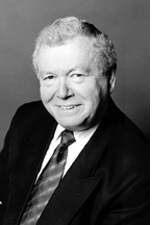 JERUSALEM—The mantra you hear very often in political discussions here is that Israel must be a Jewish and a democratic state. The problem is that the two don’t necessarily go together. To make sure that the state is Jewish implies that the rights of non-Jews, including Arabs, may have to be curtailed. To make sure that the state is democratic may mean that Israel has to be a state for all its citizens, not only for Jews. JERUSALEM—The mantra you hear very often in political discussions here is that Israel must be a Jewish and a democratic state. The problem is that the two don’t necessarily go together. To make sure that the state is Jewish implies that the rights of non-Jews, including Arabs, may have to be curtailed. To make sure that the state is democratic may mean that Israel has to be a state for all its citizens, not only for Jews.
 Should the latter alternative come to prevail, the Zionist enterprise, with its stress on both Judaism and democracy, will have failed. That’s why the central task of the Zionist movement has been to promote aliyah, immigration of Jews to Israel. Nowadays, when even the immigration from the former Soviet Union has dried up, this means immigration from the Western countries, notably North America and Europe. Should the latter alternative come to prevail, the Zionist enterprise, with its stress on both Judaism and democracy, will have failed. That’s why the central task of the Zionist movement has been to promote aliyah, immigration of Jews to Israel. Nowadays, when even the immigration from the former Soviet Union has dried up, this means immigration from the Western countries, notably North America and Europe.
That’s an uphill struggle, because people don’t emigrate when they’re comfortable in the countries in which they live, whatever their ideology. To win that struggle, different agencies have been set up in Israel the task of which is to make Israel as attractive as possible for olim from the West. The traditional ways of the World Zionist Organization and the Jewish Agency may have become irrelevant; there’s even talk of dismantling the Agency’s Aliyah Department. It’s difficult to imagine a more devastating blow to Zionism, delivered by its own child – the State of Israel.
Internal growth is considered to be problematic, because it’s the ultra-Orthodox and Arab sectors of the population that produce most babies. The former doesn’t care for democracy, the latter is unhappy with the Jewish dimension.
But, as stated above, Jewish immigration from the free world rarely happens. Israelis get excited when a couple of hundred Jews arrive from the United States or a few dozen from Britain, but they know that this is more symbolic than substantive. For a while there was immigration from France, but we hear that since Sarkozy has become President, aliyah from France has greatly decreased. The irony shouldn’t escape us: because Sarkozy is good to Israel, Jews are happy to stay in France.
The effect of all this has been that last year more Jews left Israel – for the United States, Europe, Australia and South Africa – than Jews came to Israel from these and other countries.
But there are many people, probably millions, who crave to come to Israel. Not only those from the Philippines, Thailand, Rumania, etc. who already work here, are married, have children born in Israel and now want to stay for good, but the many refugees from African countries – Eritrea, Sudan and others – who risk their lives to reach Israel. Prime Minister Olmert speaks of a potential tsunami of such refugees.
Israel is in a real quandary. To let them all in would seriously endanger the Jewishness of the state – even though some of them are only too happy to convert to what they perceive to be Judaism. Not to let them in would be compromise Israeli democracy and trample on fundamental Jewish values. Jews, who have been “strangers in the land of Egypt,” as the Bible has it, should know their sacred duty to receive strangers and provide for them, whether or not they’re Jews.
This is by no means the only problem that Israel is facing today, but it deserves our serious attention, even though nobody seems to know how to solve it.
.


THE POLITICAL GROTTO
Puzzling through the divestiture debate
By Gary Rotto
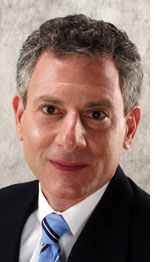 SAN DIEGO—I’m not much for divestiture campaigns. They make me a bit uncomfortable. The tactic was used successfully to cause social change in South Africa. Certainly the apartheid system was institutionalized racism at its worst. But world Jewry had to pause to consider that South African Jews were well accepted by the Government and had the ability to create strong Jewish communities and institutions. South Africa also was a strong supporter of Israel. This of course allowed the Palestinian Liberation Organization to create ties with the African Nationalist Congress, the opposition movement to apartheid. But after that pause for a brief reflection, everyone understood that the oppression and social separation mandated by the white-dominated South African government had to give way to a greater freedoms and a truer democratic government in South Africa. SAN DIEGO—I’m not much for divestiture campaigns. They make me a bit uncomfortable. The tactic was used successfully to cause social change in South Africa. Certainly the apartheid system was institutionalized racism at its worst. But world Jewry had to pause to consider that South African Jews were well accepted by the Government and had the ability to create strong Jewish communities and institutions. South Africa also was a strong supporter of Israel. This of course allowed the Palestinian Liberation Organization to create ties with the African Nationalist Congress, the opposition movement to apartheid. But after that pause for a brief reflection, everyone understood that the oppression and social separation mandated by the white-dominated South African government had to give way to a greater freedoms and a truer democratic government in South Africa.
Since that time, various divestiture movements have arisen but the only one with some teeth, albeit only baby teeth, was aimed at economic ties with Israel. In the early part of this decade, “Divestiture from Israel” chapters formed on several college campuses. The thesis was that investment in Israel was allowing for not only the continuation of settlements on the West Bank but also the continued “oppression” of Palestinians in Gaza. I know that many people shared my feeling that since the Palestinians had autonomy in Gaza, the movement was really one of delegitimizing the existence of Israel.
On the campus of UC Berkeley, petitions were circulated calling on the Board of Regents and the state of California to divest from companies that do business in Israel.
.
Fortunately, as the baby teeth were shown, Governor Gray Davis issued a strong statement against this nascent movement. Both Davis and Lynn Schenk, who was his chief of staff, recognized the foolishness of this movement as well as the danger presented if a strong statement was not issued.
Which brings me to the recent movement to divest from Iran. Clearly, the Iranian regime is an oppressive oligarchy of religious fanatics. And having a nuclear device in the hands of religious fanatics is clearly an unsettling thought to say the least. But what can be done? Assemblyman Joel Anderson had the answer when he authored a bill to require the State of California to divest its investments from companies doing business with Iran. The legislation flew through the legislature onto the Governor’s desk and was quickly signed into law.. As a follow up, the Assemblyman has authored a resolution requesting that the University of California system and the California State Universities and Colleges divest from similar investments in Iran.
There are two questions here: can such a movement cause either the downfall of the Iranian government or force the current regime to change its stances on nuclear power, Israel, the historical accuracy of the Holocaust and many other issues? Various economic sanctions have hurt the Iranian economy. Iran, despite its vast oil reserves, has become a net importer of oil. At today’s market prices, that is a costly order for the government to fund. Sanctions have hurt the nation, but have not forced a regime change.
The second question is whether this will spawn a new round of divestiture proposals. My concern is whether we will see a better funded movement to divest from Israel if the Peace Process fails. It’s easier to say “no” to a strategy in general and far more difficult to convey nuances in the public forum. Use divestiture in this case but not that case. While I doubt that the majority of the public would support a divestiture movement against Israel, it would be a matter of defending Israel’s right to defend itself and demonstrating why Israel is correct in a particular negotiation stance and the Palestinians are wrong. Most people just want the two sides to split the difference and see Israel as uncompromising. Frustration could lead people in the middle to at least pause and consider if Israel needed to be “encouraged” to compromise.
Maybe I’m over- thinking this issue. Maybe I’m a bit paranoid. But it is difficult to make international policy decisions without considering how the policy will be used in other situations.


Please click on ads to visit their respective organizations' websites.


PETE'S PLACE
So maybe Eden wan't where we thought
By Peter Garas
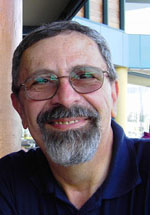 CANBERRA, Australia—Current attempts to interpret the Bible try to make some sense of the time frame within which the stories in Genesis deal with the creation of the world and of human kind. CANBERRA, Australia—Current attempts to interpret the Bible try to make some sense of the time frame within which the stories in Genesis deal with the creation of the world and of human kind.
Those who wish to align the fossil record with the contents of the first of the "Five Books of Moses" suggest that the references in the (presumed) original text are more allegorical than strictly accurate and that as a consequence, the notion that the Almighty created heaven and earth in the space of six days and then rested on the seventh, can not be interpreted literally, but according to some complex mathematical schema that some other, no doubt highly learned individuals, have devised over time.
However, I am afraid that the latest finds in Spain are going to make a few people have to go back to their charts and calculations because ABC News in Australia reports that:
Scientists in Spain say a fossilised jawbone and a number of teeth unearthed in a cave in northern Spain prove that humans lived in Europe much earlier than previously believed. An article in Nature magazine says the fossils, which were found last year, are more than 1 million years old. Until the last decade, there was no evidence that humans settled in Europe until about 500,000 years ago.
I for one look forward to the latest round of explanations that scientists and religious leaders are going to have to find to explain the appearance of humans in Europe much earlier than previously believed.
A tiny impish and completely irreligious little voice in my head suggests that perhaps this is not so strange - maybe Paradise was actually in Europe, indeed on the Iberian Peninsula, and it was only after Adam and Eve ate from the tree of knowledge and were cast out that they vanished to reappear in a new location, which just happens to be the Middle East.
This could become the focus of a whole new series of campaigns to increase the tourist trade to the Iberian peninsula.
I can see it now:-
Come to the home of "Paradise Lost" (with apologies to John Milton) or "If you haven't been to see Spain you don't know the Paradise you are missing!"
Then again it could put the current issues in the Middle East region into a more appropriate light- I mean - without meaning to sound too harsh - life there at present is not exactly what you would expect from a "Land of Milk and Honey."
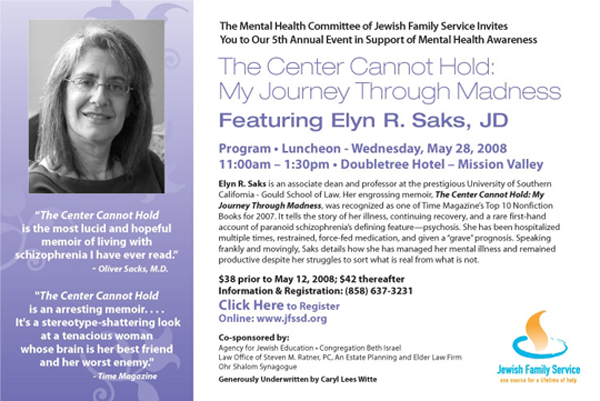
Please click on Jewish Family Service ads above or below to visit its website


THE JEWISH CITIZEN
Lessons from historical preservationists
By Donald H. Harrison
 SAN DIEGO—A civic battle is brewing in the City of San Diego over the issue of property tax breaks for historic properties. While Jews, no doubt, are on both sides of the issue, I think the controversy may be instructive for the Jewish community by way of analogy. In my opinion, the historical preservation community has become so insular, it sees only its own needs—not those of the city at large. I fear on the larger stage, we in the Jewish community must guard against falling into a similar pattern. SAN DIEGO—A civic battle is brewing in the City of San Diego over the issue of property tax breaks for historic properties. While Jews, no doubt, are on both sides of the issue, I think the controversy may be instructive for the Jewish community by way of analogy. In my opinion, the historical preservation community has become so insular, it sees only its own needs—not those of the city at large. I fear on the larger stage, we in the Jewish community must guard against falling into a similar pattern.
James R. Mills, a San Diegan who once served as president pro tempore of the state Senate, was the author of the Mills Act, which authorizes city governments to reduce property taxes on specified homes or buildings in order to preserve them for their historical value. There are numerous criteria for what kinds of properties qualify. First, they must be at least 45 years old. In addition, they must meet at least one of the following tests.
1) They were associated with a historical person or event. In Old Town San Diego, for example, there are homes that date back to our Mexican period, such as those owned by the Picos and the Estudillos; and homes relating to our early American period, such as the Robinson-Rose House and the Whaley House.
2) They are examples of a historic style of architecture, for example, Spanish colonial, Victorian, Craftsman, and so forth.
3) They are examples of the work of a master architect or builder. Irving Gill, for example, was one of San Diego’s most celebrated architects.
4) They depict a trend in the historic development of the city. For example, La Jolla had a group of cottages along the shoreline, which attracted artists and other visitors. Point Loma had its Portuguese fishing settlement. Downtown had its Chinese district.
5) They sit on sites of archaeological significance. For example, the ruins of the first mission and fortress complex in San Diego lies buried under the lawns of Presidio Park
People who believe in historical preservation know that there are benefits to lovingly maintaining parts of our physical past. Think of the enjoyment all of us get walking through the Gaslamp Quarter and seeing buildings that were erected in the 19th century adapted to modern day usages. Think of hotels like the U.S. Grant, or the Horton-Grand.
If it makes you shudder to think of such places being brought down by a wrecking ball, and then being replaced by a high-rise condominium, or by some other building with little aesthetic value but plenty of potential profit for its landlord, then you understand the logic of Mills Act incentives to encourage owners of historic properties to keep them in their historic condition.
The civic organization that is the most effective in advocating in behalf of historic properties is the Save Our Heritage Organization (SOHO). Headquartered in the historic Whaley House in Old Town, SOHO was the mastermind behind nearby Heritage Park where beautiful Victorian-era structures that faced demolition elsewhere have been gathered in a dreamlike setting. Old Temple Beth Israel is one of these buildings.
The work done by SOHO and by its allies on the City of San Diego’s Historical Resources Board is quite laudable. Having served a term on the HRB, I can testify to how dedicated to historical preservation SOHO is. I honor that organization’s contributions to our city.
At the same time, I have become a critic of the system established by the City of San Diego for determining whether homes should be granted Mills Act property tax deductions. In an independent report, so too has the county Grand Jury, which annually makes recommendations on ways government can be improved. Mayor Jerry Sanders now is proposing to the San Diego City Council various reforms of the system. The historical preservation community is alarmed, fearing the reforms may lead to wholesale destruction of historic properties. Mayoral candidate Steve Francis is echoing these fears.
It is important to keep in mind that whenever a property tax deduction is granted by the city, it impacts the budgets of three governmental entities: The City of San Diego, the County of San Diego, and the San Diego Unified School District.
While governmental budgets are always stretched, the financial problems of the City of San Diego and the San Diego Unified School District have become dire. Both are being forced by budgetary shortfalls to cut services. The schools have sent out pink slips to counselors, nurses, and teachers. The city has reduced hours of operation of some departments, cut staff and has deferred maintenance on infrastructure. All three governmental entities are poring over their budgets trying to figure out where they can cut next.
We are used to the various needs of government competing with each other for funds. That’s what budget making is about. Department heads tell what they will need in the following year to maintain current levels of production or to improve upon them. In years of shortfall, they explain why their department should be spared the cuts that will fall on other departments. What city responsibility should be prioritized in the process? Police? Fire? Lifeguards? Parks? Road maintenance? Historical preservation?
The way matters are set up in the City of San Diego, historical preservation gets an unfair advantage. The question of whether a property tax break should be granted usually does not go to the elected City Council (unless there is an appeal). Instead the decision is made by a group of unelected citizens, who are not even permitted to consider the fiscal impact of their decision-making. Under the process, all these members of the Historical Resources Board can do—after weighing the evidence—is to decide whether a given property meets historical guidelines or not. If it does, the tax break machinery starts working. And that machinery has an impact not only on the City of San Diego, but on the other two governments as well because each of them receives a portion of the taxes on an individual property. When the taxes are reduced by the city, so too are the portions allocated to the other governments.
What made me cringe while serving on the HRB was the realization that most of the properties for which owners were seeking tax relief were in the wealthier areas of town—Point Loma, Mission Hills, La Jolla. Their owners were people who could afford to invest several thousand dollars for a consultant to prepare a report on the property for the board to consider. Given the potential payoff—a tax reduction on their property of up to 70 percent per year for 10 years, renewable ad infinitum—such property owners made a wise investment.
But here the question of fairness is dramatically raised. In the total scheme of things, what is more important? Having a nurse at a school to help a child who may become sick, or providing a tax break for a wealthy family? Will those million dollar and multi-million dollar homes in Mission Hills and La Jolla really be torn down if the city doesn’t give tax breaks to their owners to keep them in good condition? Or can a system be devised to incentivize property owners in other ways? How many property owners would be satisfied, for example, just to have their efforts to preserve history officially recognized as being of city benefit?
Priorities for how we spend our dollars need to be decided by elected officials rather than by the very interest groups that are competing for those dollars. Future Mills Act approvals in the City of San Diego should be required to go through a two-step process. The Historical Resources Board should decide the issue, on its merits, of whether a home or building is historical. Then the elected city council should decide what level of tax break--if any—to authorize to incentivize the property owner to keep the property in its historical condition.
The City of San Diego has designated more than 800 properties as historical, and more applications are in the works. The impact of current property tax deductions is approximately $3 million annually, the brunt of that falling on the school district.
The much larger city of Los Angeles has designated less than half as many properties as historical than San Diego. Is Los Angeles derelict in its historical duty? Or is San Diego going overboard?
The 45-year threshold means any property built in 1963 or before now is eligible for consideration. Questions are being raised about how many examples of a particular architectural style should be subject to tax breaks. How can Mills Act contracts be monitored to make certain that the property owner is maintaining the property? What mechanisms need to be in place if a property owner fails to live up to his obligations? All these questions are policy issues, on which there is bound to be debate. They should be decided by elected officials who are responsible to all the voters, not only by members of the historical preservation community.
*
Now let’s draw back from that controversy and by analogy look at our Jewish community. Like the historical preservationists, we work very hard on behalf of issues that are important to us as a segment of the overall community.
In particular, we worry about the safety and security of Israel. Mindful of the Holocaust experience, we want to protect minority populations against genocides, and desire furthermore to extend to all people the blessings of human rights. Domestically, we want to make certain that the various levels of government do not get into the business of preferring one religion over another.
Often our interests conflict with each other. We may find candidates, for example, who are strong on Israel but insensitive, even opposed, to our concerns about the need to keep governments out of the religion business. Sometimes, we encounter candidates with the opposite priorities.
There are times when we may be too parochial. For example, we must understand that there are occasions when it is inevitable—even healthy—for the United States and Israel to follow different policies toward the Arab bloc and towards the Palestinians. We must be willing to understand that just as a city has many budget priorities—and can’t give an automatic pass to the historical preservationists—so too does the United States government have foreign policy objectives that include alliances with pro-western Arabs countries against state sponsors of terrorism.


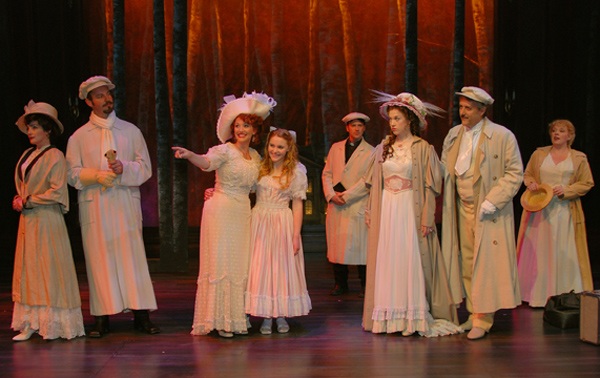
ARTS IN REVIEW
Sondheim's 'Night Music' a Cygnet success
By Carol Davis
SAN DIEGO—Stephen Sondheim’s music isn’t the type of music one usually hums. It’s more of a listening experience. Probably one of the Jewish composer's more recognizable melodies is “Send in The Clowns” from A Little Night Music, but one of his absolutely all time terrific tunes, “A Weekend In The Country” (he is credited with both music and lyrics) from “Night Music” for which he won the Tony in 1973, is a masterpiece. It not only wraps up Act I of “Music” but also sets the mood for an intriguing, fun-filled and somber Act II.
In fact the entire musical, which is utterly delicious, “was written in some form of triple time, so that the whole score would feel vaguely like a waltz." A lieder quintet, which acts as a Greek chorus opens the show (and wanders among the actors throughout), dressed in beautiful ball gowns (Jeanne Reith), and dance through an idyllic setting (“Overture”) giving us a glimpse into the promises and frustrations of what’s to come.
The Cygnet Theatre, home based for five years in the Rolando/College area, recently took on the challenge of operating the Theatre In Old Town as well as keeping their little gem on El Cajon Boulevard. Most likely, running two theatres is as much of a challenge as was the mounting their first show in Old Town San Diego Stat Historic Park: A Little Night Music. But the movers and shakers of Cygnet Theatre are used to challenges and are more than adept at making things work, and they do, and did! The only thing lacking from this successful production was live music, however with Sean Paxton’s orchestrations and with Don LeMaster’s musical direction, the show hums even though the sound (George Yè) would be much improved with live music.
With Sondheim’s lyrics and music and Hugh Wheeler’s book, based on the late Ingmar Bergman’s film Smiles of a Summer Night this tragic/comical farce entertains more each time I see it. It is, in effect, Sondheim’s tribute to the waltz. Simply put, (this is no simple matter, however) it is the story of three mismatched couples; Count Carl-Magnus Malcolm (Randall Dodge) and Countess Charlotte Malcolm (Sandy Campbell), Fredrik Egerman (Sean Murray) a widowed lawyer and his very young wife Anne (Courtney Evans is charming); and Madame Armfeldt (Sandra Ellis Troy), Desiree’s mother and Frederica (Nicki Elledge) Desiree’s daughter who reside in the country at Madame Armfeldt’s house ‘in the land of the midnight sun’.
Henrik Egerman, (Sean Cox is just right as the misguided bible student) Fredrik’s son by his first wife, who is a Divinity student, is in love with his stepmother Anne, as she is with him, but doesn’t know it at first. Petra (Melissa Fernandes is her usual effervescent self) their maid who attempts to teach Henrik the ways of the world but he’s a bumbler (“Later you’ll soon get the knack of it”), is trumped by Anne. Both Fredrik and the Count are vying for the attention of Desiree Armfieldt (Marci Anne Wuebben) an actress and former mistress of Fredrik’s. Fredrik loves his young wife Anne, but after an 11-month marriage, she still remains a virgin. He’s getting a little antsy!
During a trip to the theatre to see ‘the great Desiree’ perform, Desiree plays to Fredrik much to the chagrin of his young wife, Anne. She leaves the theatre in a huff and he manages his way back to Desiree's dressing room after her performance. He has not seen her in 14 years. Both try to rekindle their relationship.
Meanwhile Count, who is quite a bore and bully, does everything he can to insult his wife by flaunting his relationship with Desiree. Charlotte, who is truly in love with the Count, will do anything to get his attentions back. When the Count finds Fredrik in Desiree’s dressing room and in his dressing gown, he throws a jealous fit. He tries to defuse the relationship by urging his wife to visit her old school friend Anne and tell her about her husband, Fredrik, which Charlotte does willingly. Both women commiserate with each other.
Back at Madame Armfeldt’s house, Desiree who is visiting both her mother and daughter arranges for her mother to invite Fredrik and his family for ‘a weekend in the country’. When the Count hears of the invitation, he takes himself and Charlotte there as well, uninvited. The plot thickens when all the characters arrive at Madame Armfeldt’s country home. The schemes, egos, dalliances, lust and self proclaimed love play out in three quarter time all under the skillful direction of Sean Murray.
It is here at the country estate that Desiree and Fredrik, again reunited and alone sing the lovely and heartbreaking “Send in The Clowns”. Wuebben’s Desiree is right on target as the aging actress longing for a second chance, as is Murray’s Fredrik. Both show a maturity that has taken over their youthful lust and both impress with their nuanced interpretation.
As for the rest of the talented cast there isn’t a weak link among them. Campbell’s Charlotte is crisp and candid with her conceited bully of a husband whom she sincerely loves but in his arrogance, he doesn’t see it. With a voice like a nightingale, she sings “Every Day a Little Death” as she plots to get back some of her dignity from her hard nosed husband. Dodge on the other hand is perfect as the egotistical Count. Seen on the stages of both Starlight and Moonlight is roles such as Gaston in Beauty and the Beast and Frank Butler in Annie Get Your Gun, he has the look, demeanor and voice to pull off the role of this lout.
Sandra Ellis-Troy is just what the doctor ordered as Madame Armfeldt. It is through her that we learn of the meaning of the ‘summer nights’ and how they smile three times at the follies of human beings. The first smiles at the young, who know nothing. The second at the fools, who know too little…and the third at the old who know too much. Her words of wisdom play out as she prepares for her own death. Ellis-Troy, a smart actor in her own right, plays her cards to the letter as she guides her grand daughter through her life’s vicissitudes. It’s a great role for her.
Overall this is truly a not-to-miss production. No question with Sondheim’s lyrics and music and Wheeler’s book, A Little Night Music which garnered three Tony’s and has been produced on Opera stages across the country as well as London is being given top notch outing here in San Diego’s Theatre in Old Town. With Jeanne Reith’s gorgeous period costumes, James Vasquez choreography to guide the quintet, Matthew Novotny’s subtle lighting design and Sean Fanning’s minimal set design A Little Night Music is a little night magic. It plays through May 11
See you at the theatre.
By Jordan Dubin
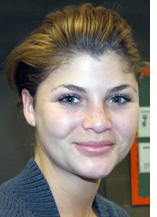 SAN DIEGO—Hillary Clinton has my vote for a very simple reason—I trust her ability to lead. Her presidency wouldn't be some hope-driven gamble like Obama's because she has the sort of experience as a leader—even within the White House itself—that assures success. I believe in her readiness, in her confidence, in her policies and in the fact that she can deliver from day one. I expect no less from our future president. SAN DIEGO—Hillary Clinton has my vote for a very simple reason—I trust her ability to lead. Her presidency wouldn't be some hope-driven gamble like Obama's because she has the sort of experience as a leader—even within the White House itself—that assures success. I believe in her readiness, in her confidence, in her policies and in the fact that she can deliver from day one. I expect no less from our future president.
Clinton's plans for ending the Iraq war once in office address the need for stability for that country as well as its neighbors in the Middle East. I appreciate her unwavering support of Israel—one of America's most important allies and my most important issue. Where Obama's stance on Israel has been questionable, Clinton's has been invariable since the days her husband spent in office working to create a viable solution to the Israeli-Palestinian conflict.
The New York senator advocates working towards a balanced budget, reducing spending while cutting taxes for the middle class, making health care affordable and available to all, and creating new jobs while simultaneously decreasing our dependence on foreign energy. Fiscally responsible mesures such as these, plus the end of an unimaginably expensive war, can bring America back to its undeniable position of world power. People need to understand that hope is not enough. Hillary Clinton will deliver.
Senator John McCain
By Will Bohannon
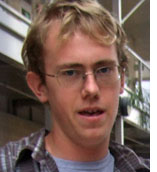 SAN DIEGO—A strong president is a patriotic one and no one is more so than Arizona Senator John McCain. He served in the U.S. Navy and was tortured for five years in some "hell hole" in Vietnam. Before that he was nearly killed when his airplane was accidentally struck on an aircraft carrier and turned into an inferno, but he continued his service to his country. Even after being tortured for five years in Vietnam after having both his arms and his leg broken, he never surrendered and when he was finally freed he once ore returned to his naval service. That is dedication to one' country. SAN DIEGO—A strong president is a patriotic one and no one is more so than Arizona Senator John McCain. He served in the U.S. Navy and was tortured for five years in some "hell hole" in Vietnam. Before that he was nearly killed when his airplane was accidentally struck on an aircraft carrier and turned into an inferno, but he continued his service to his country. Even after being tortured for five years in Vietnam after having both his arms and his leg broken, he never surrendered and when he was finally freed he once ore returned to his naval service. That is dedication to one' country.
He has served in both the House of Representatives and the Senate. You cannot deny the political experience he gained from that much time in Congress. Furthermore, his economic policy (although he himself has admitted that he isn't strong i that area) will retain the Bush tax-cuts-—something that I feel is needed to maintain strong tax-revenue from the rich. What McCain may not know about economics, he will be able to learn from a strong Cabinet.
The President needs to be a strong, charismatic leader who can make the best decisions for the U.S. and that man is McCain. Although some candidates will say anything o be elected, McCain seems to be a man who will never back down. He will lead America to victory whatever events may come. He is a man willing to give anything to better the country.
Senator Barack Obama
By Charly Jaffe
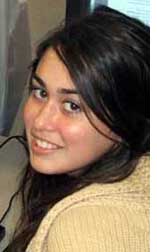 SAN DIEGO—I believe that there are a variety of different equations leading to a successful presidency, all depending on time, environment, public sentiment, and, of course, the qualities of the candidate him or herself. Today I strongly believe that Barack Obama is the best fit for our needs. The presidency goes beyond politics and one's personal stance. Although I would like to award George Bush the sole blame for our current circumstances, it is the advisors behind the president that are often the brains of the operation. But there are certain things that advisors cannot do. A gifted, charismatic orator, Obama has the ability to inspire; just look at the numbers of young Americans showing up to rally ad vote. We live in an extremely divided, partisan America and Obama is the only candidate who can heal, rather than hurt, that situation. SAN DIEGO—I believe that there are a variety of different equations leading to a successful presidency, all depending on time, environment, public sentiment, and, of course, the qualities of the candidate him or herself. Today I strongly believe that Barack Obama is the best fit for our needs. The presidency goes beyond politics and one's personal stance. Although I would like to award George Bush the sole blame for our current circumstances, it is the advisors behind the president that are often the brains of the operation. But there are certain things that advisors cannot do. A gifted, charismatic orator, Obama has the ability to inspire; just look at the numbers of young Americans showing up to rally ad vote. We live in an extremely divided, partisan America and Obama is the only candidate who can heal, rather than hurt, that situation.
America's current standings abroad are worse than ever before, and in that arena, personality often plays a huge role. Many of the most successful presidents in foreign relations, Ronald Reagan, John F. Kennedy, independent of political party, played more on personality than policy in order to achieve success abroad. Obama has the potential to mend America's broken relations, while Congress continues to pass bills representative of what the American people want. Although Barack Obama has the least experience in American politics, I support him because I believe he has the most potential.

Please click on the schools' ads to visit their respective websites


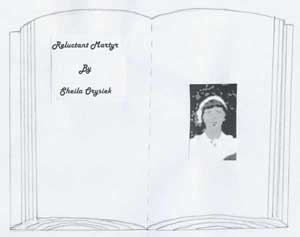 Editor's Note: With this issue we begin a serialization of Reluctant Martyr, a historical novel by our columnist Sheila Orysiek. It is based on the experiences of her aunt. In each Friday-Saturday edition of San Diego Jewish World, we will run another installment of the 21-chapter book until its conclusion. We thank Sheila for granting us first publication rights to her book. If serialization proves popular with our readers, we will endeavor to bring you other books of Jewish fiction and non-fiction on a similar basis. Comments are welcome at sdheritage@cox.net Editor's Note: With this issue we begin a serialization of Reluctant Martyr, a historical novel by our columnist Sheila Orysiek. It is based on the experiences of her aunt. In each Friday-Saturday edition of San Diego Jewish World, we will run another installment of the 21-chapter book until its conclusion. We thank Sheila for granting us first publication rights to her book. If serialization proves popular with our readers, we will endeavor to bring you other books of Jewish fiction and non-fiction on a similar basis. Comments are welcome at sdheritage@cox.net
Reluctant Martyr—Chapter One
My life was lived between the sleeps
Asked, one gives, one sows, one reaps
Sowing, reaping, bargains and barter
Yes, I answered, but as a reluctant martyr
The old woman could barely be seen through a window that was spattered with the dirt and dust of the city. Her small delicately molded face, framed by a few wisps of white hair, was lined with the ravages of care. Blue veined hands were folded in her lap and the gleam of life was fading from her dark eyes. It was a warm September day but the window was tightly closed, as the air seemed chilled to her. The light of day barely penetrated into the tiny room and she was unaware of the children playing on the crowded, dirty street below.
Scattered around the small room were the bits and pieces of her life; an odd accumulation of furniture, some of it broken and unusable. Boxes were lying on the floor and many had not been opened for years, the contents long since unneeded and forgotten. Mounds of soft dust were everywhere, and yet there was evidence of a struggle for cleanliness. No unclean dishes were left lying about and there was no obvious track of dirt on the floor. Her small lumpy bed, which stood against a wall, had been made as neatly as old eyes and hands could manage. The door to the hall was heavily latched, locking out the world and locking in her fear.
The tenants of the other rooms could be heard going back and forth to the bathroom they all shared. It was at one end of the hall and the stairs leading three flights down to the street below, at the other end. At the foot of the stairs a telephone rang constantly and each time the landlady’s shrill voice shouted up the stairwell for one person or another to come to the phone. They were a polyglot group of tenants; both young and old. Though the younger people needed this inexpensive place to live, they were still optimistic in their belief that they had a future and the stay in this squalid rooming house was temporary. The elderly tenants had lost that hope.
Outside on the busy street, children played and their noise drifted up through the building. Trolleys and cars rattled along the old cobble stoned city roads. Stores lined the streets, cheek by jowl, seeming to lean upon one another for support. The old neighborhood had its very own individual institutional memory. It formed a community within the larger city that surrounded it.
A light went off somewhere in the old lady’s head, a bursting of one small vein that errupted, an invisible spewing of blood under the skull. Her hands went limp, the eyes faded a bit more and her face relaxed. Another life span was over. So quietly it went. There was no fanfare to announce or to warn of a passing. It fled like a whisper, one more lifetime in a cast of millions. And yet, it is important to mourn its finish. Perhaps her life’s end couldn’t be heard because the din of life around it was overwhelming; the children still shouted, the telephone still rang and people continued to walk down the hall to the bathroom.
.................................................................
Dusk fell, and city dwellers began the struggle to return home. A garment factory emptied its workers onto the street and one middle-aged woman gathered up her purse and coat from the employees’ locker room and joined the crowd. Hasty good-byes were said and she went through the glass paned double doors that opened to the street and became part of the stream that led like a river to the subway entrance. As one solid mass the people went down the steps, through the turnstiles and onto the platform. A muffled roar grew and filled the place as a rush of dank, fetid air preceded the train as it pulled into the station. The crowd rushed for the doors and the woman found a pole to hang onto as they started forward; everyone moving as one body with each lurch of the train. Several stations later, she pushed through the crowd to the door in time to get off at her stop.
The day was rapidly fading and the warm autumn breeze had turned quite chilly. A cold, damp wind greeted her as she made her way up the subway steps and hurried into a kosher butcher’s shop just before it closed. The butcher looked up and smiled as he wiped his blood stained hands on a scarlet streaked apron, “Well, Mrs. Linz, I was hoping you’d get here before I closed. It’s Friday and I saved a nice chicken for you.”
“Thank you for that,” she answered. “I’m sharing it with Mrs. Love. You know she likes the white meat, and I like the dark. We’re a good combination; a team.”
Adele Linz paid for the chicken and left quickly to get home before full darkness as the streets were dangerous at night. She ran into the rooming house and up three flights of stairs, anxious to tell her friend she was home. Before going to her own room she hurried to the friend’s door and knocked. “Hannah, it’s Adele.” She tried the door but it was securely locked. She raised her voice a bit, “Hannah, are you asleep? Come on its cold in the hall. Hannah?”
“What’s all this yelling?” another tenant asked as he poked his head out of the door across the hall.
“She doesn’t answer.”
“So what - she’s probably asleep, she’s an old lady,” he said as he slammed his door shut.
“Maybe she’s sick or something.” Adele turned back to the door and knocked again. “Hannah!” she continued to call.
The landlady, never far from any action, came up the stairs. “What? What is happening?”
“Hannah doesn’t answer her door.”
“Maybe she went out,” the landlady declared, her hands on her hips.
“She never goes out after dark, you know that.” Adele knocked louder. “Maybe we should call the police.”
The landlady was shocked. “No! No! Not in my place. No police!”
“Well,” said Adele, “you’ve got to do something.”
Another roomer, a college student, had joined the group. “We should definitely call the police. She may be sick and need help.”
Someone did call the police. The red Philadelphia patrol car pulled up by the curb and the children stopped playing and surrounded it. People stopped to watch as two burly officers got out. One looked up at the address on the wall of the building checking it against the information written on a pad he held in his hand. They walked through the gathered people and into the rooming house. The tenants had all come out of their rooms and stood in the front hall and pointed up the stairs. The officers looked at one another and then started to climb, the tenants following behind them. By the time they reached the third floor one officer was busy wiping his streaming forehead with a big plaid handkerchief.
On the third floor the police were surrounded by even more tenants, each offering his or her version of why Hannah did not answer. But everyone stood back while the policemen knocked and then pushed on the door. Finally, one threw his weight against it and the old door gave way. It was dark inside. The officers turned on flashlights and made their way into the room. They found a chain that hung from the single bare light bulb in the center of the ceiling and pulled it. The officers looked around and then one walked back to the hall and pushed away the crowd.
“What’s wrong? What? What? I’m the landlady and I should know!” The officer let the landlady in and she pulled Adele with her while the other officer was on his knee by the chair near the window. The women slowly walked over and looked in shocked surprise.
“Which one of you knew her?” he asked.
“I did," Adele said softly. "She’s dead isn’t she?” But Adele already knew the answer and began to cry.
An ambulance arrived and the tiny, frail body was taken away. In succeeding days movers came, emptied the room, and its contents were put into storage while a distant family was notified. An attorney’s assistant was sent to the storage company to inventory the leftovers of a lifetime. Preston was a young man in his late twenties and this was his first assignment and it was not what he had expected he would be doing as a legal aide. He arrived early in the morning, yellow legal pad in hand, ready for a dreary day’s work.
Twelve boxes of various sizes lay about and he pulled open the largest. The musty odor that had pervaded the rooming house was also in the box. Inside were piles of clothes, old, shabby, faded and shapeless. What a way to have to spend the day, he thought, as he carefully marked and described each item on the yellow pad. Then he turned to the next box. In it was a set of glass dinnerware, several plates of pressed, depression glass in pastel colors; delicate pinks, blues, yellows, and greens. A fruit bowl with a lace napkin still in it and an after-dinner mint holder; guests had been entertained with these treasured dishes. Linens filled the third box and each piece was hand embroidered and monogrammed with the initials “HPJ”. Rosettes and sprigs of greenery had been lovingly sewn around every letter on the heavy linen tablecloths and lace napery. Then he lifted heavier solid objects wrapped in muslin and after slowly unwinding the cloth, he held in his hand a thick, heavy, hand made silver fork. On the back was inscribed a date and a silversmith’s mark. Carefully Preston unwrapped more silverware and each had a different date but the same maker. Altogether there were a dozen pieces: forks, knives and spoons. He also uncovered a beautifully stemmed silver wine goblet, and tucked into a corner four wine cups all in heavy silver; a treasure trove of another age.
The last box was the smallest, about twenty inches high and at first it seemed to contain only lace handkerchiefs. He picked them up; the smell of many years was strong. Wrapped in one was a pair of eye glasses set in delicate wire frames, with a crack in one small round lens. In another handkerchief was a crumbling dried rose. There were some yellowed pictures of a smiling girl of about eighteen years old standing against a tree in a park. Her short hair was in curls and a floppy dress went down to her ankles. Next out of the box came a small jewelry casket with a yellow strand of pearls inside and a gold wedding ring made to fit a delicate hand. Under the casket he found a book of poetry with more faded photographs inside the cover and beneath the book were documents: immigration papers, stubs of steamer tickets, naturalization papers and two marriage licenses.
Preston sat, surrounded by this evidence of another human being’s existence and he couldn’t help but be struck by the force of the questions it raised. Who had read these poems? Who was the girl in the photographs? Were the meals served on the dishes happy ones? Why save cracked eyeglasses?
Copyright 2008 Sheila Orysiek. All rights reserved

SAN DIEGO JEWISH WORLD THE WEEK IN REVIEW
Lawrence Baron, PhD in San Diego: No respite from racism: 1936 in the evolution of German racial politics
Rabbi Dow Marmur in Jerusalem: Requiem for the Winograd Report
Sheila Orysiek in San Diego: Advice for Obama: In life and in politics we are judged by the friends we keep
Gary Rotto in San Diego: Obama's 'race' speech showed leadership
From SDJA Student Quarterly, a publication of San Diego Jewish Academy:
Eitan Frysh in San Diego: Litter, mice force snack bar to close
Alexa Katz in San Diego: Students help honor Israel at 60
Rabbi Dow Marmur in Jerusalem: Christian liturgy profoundly impacts Jews
Ira Sharkansky in Jerusalem: U.S. economy, Mideast tensions respond to their own cycles of emotion and excesses
From SDJA Student Quarterly, a publication of San Diego Jewish Academy:
Will Bohannon in San Diego: What is SDJA like for non-Jewish student?
Emma Tuttleman-Kriegler in San Diego: Overseas anti-Semitism stuns student
Cynthia Citron in Los Angeles: Harry Boychick has a raucous bar mitzvah every Sunday in interactive Hayworth play
Peter Garas in Canberra, Australia: Israeli historian's theory on origins of Jewish people has important implications
Donald H. Harrison in San Diego: 'Brain Death Bill,' conversion to Judaism highlights in life, career of Dixon Arnett
J. Zel Lurie in Delray Beach, Florida: Obama's speech on race compares with John Kennedy's talk on his Catholicism
Rabbi Dow Marmur in Jerusalem: The plight of Christians in Arab states
David Strom in San Diego: Chabon's latest is a fast-moving mystery that raises troubling quesitons for Jews
Donald H. Harrison in Oceanside, California: The real importance of the Easter bunny
Natasha Josefowitz in La Jolla, California: The 'clonal effect' in Election 2008
Lloyd Levy in London: Ongoing hostility to Israel in British media
Sheila Orysiek in San Diego: Bella Family: The Revolt of the Cousins
Jay A. Waronker in Maputo, Mozambique: Restoring a synagogue in Mozambique
Carol Davis in Vista, California: You never can tell... or should you?
Donald H. Harrison in Rancho Santa Fe, California: Mom, 80, helped arrange surprise party for her 80-year-old son, the writer
Dov Burt Levy in Salem, Massachusetts: Issues in the wake of terror last forever
Janet Tiger in La Jolla, California: Sculptor Shirley Lichtman becomes subject of JCC art exhibit only a day after her death
Gidi Yahalom in Kibbutz Beit-Alfa, Israel: Pig's Testimony: Why Jews Don't Eat Pork
Link to previous editions
< BACK TO TOP
|
|

 —
—